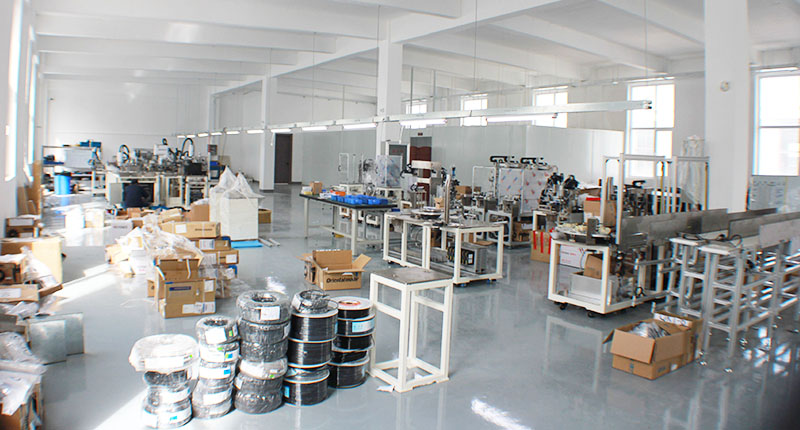With the continuous advancement of industrial technology, the application of customized automation equipment in the manufacturing sector is becoming increasingly widespread. However, designing an efficient, stable, and reliable customized automation equipment is not a simple task. Customized automation equipment is based on the idea that 80% of product performance is determined during the design stage, making high demands on the design process. Its design efficiency and quality have a significant impact on the development of industrial enterprises. So, how can we improve the design of customized automation equipment?
Clarify Requirements and Objectives:
Before designing customized automation equipment, it is crucial to clearly define the equipment’s usage requirements and ultimate objectives. Understanding the actual needs of users helps avoid unnecessary functional designs and ensures the design is headed in the right direction.
Enhance Design Usability:
The design of customized automation equipment should take into account the equipment’s manufacturing process. This ensures that the designed product aligns with employees’ operational habits, making it easy for them to accept and master. This, in turn, enhances the equipment’s durability and user-friendliness. Emphasizing the actual operational efficiency of the equipment, design a simple and user-friendly interface that facilitates smooth interaction between the equipment and operators. After completing the equipment design, it’s essential to create a comprehensive user manual. With the guidance of the manual, employees can quickly familiarize themselves with the equipment’s operation, allowing for better integration of the equipment into the company’s actual production and improving its operational efficiency.
Pay Attention to Design Rationality:
In the design process of customized automation equipment, not only customer requirements and actual production needs must be considered, but also the rationality of the equipment’s structure. A scientifically and logically designed equipment structure benefits both the safe and stable operation of the equipment, as well as its installation and maintenance. Design personnel need to diligently adhere to relevant design specifications, gain an in-depth understanding of the technical requirements, technical parameters, and usage functions of the customized automation equipment, and comprehensively compare various options before making design choices. Designers should focus on inspecting and validating the components of the non-standard equipment to ensure the rationality of their design, ensuring that components meet usage requirements in terms of stiffness, strength, and other parameters. Furthermore, it is also necessary to select materials for component fabrication and consider assembly-based manufacturing processes in a rational manner.
Strengthen the standardization of design
Design standardization is the key to promoting the smooth implementation of design and improving the quality of non-standard automation equipment design. Meanwhile, design standardization has laid the institutional foundation for introducing advanced foreign technologies. In order to carry out standardized design work, strict design procedures should be established and design steps such as scheme argumentation, drawing design, and process performance evaluation should be gradually completed. The drawings and design documents proposed in the design should be carefully checked to ensure compliance with relevant design requirements, especially the use of symbols, nouns, terms, formats, codes, etc., and should be strictly reviewed to effectively implement relevant design standards and specifications.

Comprehensive consideration of mechanical, electrical, and control systems:
Non standard automation equipment typically consists of multiple components, including mechanical structures, electrical components, and control systems. In the design process, it is necessary to comprehensively consider these aspects to ensure coordination and compatibility between them.
Designing a complex non-standard automation equipment requires interdisciplinary teamwork. The close cooperation between professional personnel such as mechanical engineers, electrical engineers, and control engineers is crucial to ensuring the success of the equipment.
Simulation
Use computer-aided design (CAD) and computer-aided engineering (CAE) tools for simulation and simulation. This can help designers predict the performance and behavior of equipment before actual manufacturing, and identify potential problems early.
Maintainability and Upgradability:
When designing equipment, consideration should be given to its maintainability and upgradability. Easy to maintain equipment can reduce downtime, while scalable design can adapt the equipment to future technological developments.
Security:
The safety of the equipment is crucial. In the design, consideration should be given to the safety of operators and the response measures of equipment in abnormal situations.
User feedback:
The end user of the device is usually able to provide valuable feedback. Maintain communication with users during the design process to understand their needs and suggestions.
Non standard automation equipment has broad prospects, but it is different from the development process of standard products. Therefore, it is necessary to strengthen research on the design efficiency and quality of non standard automation equipment, from requirement analysis to innovative design, to simulation testing and user feedback, which are all indispensable links. Through reasonable design and continuous optimization, we can develop more efficient and reliable non-standard automation equipment, contributing to the development of the production and manufacturing industry.



